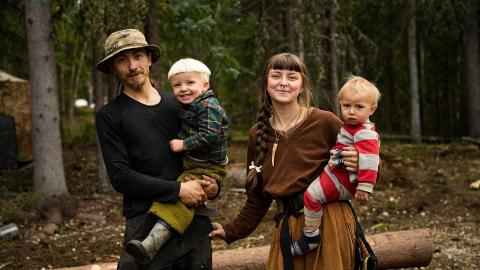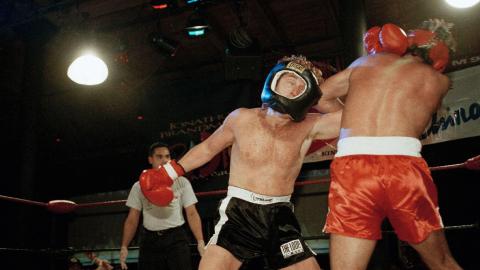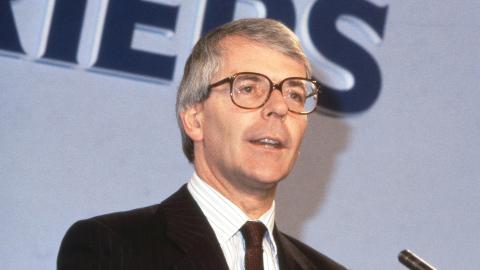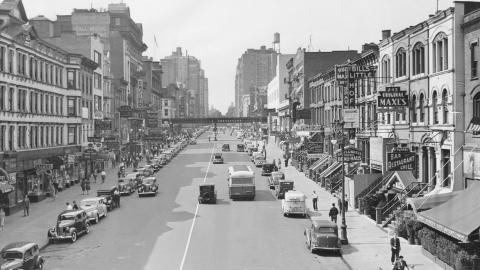Nelson Mandela: The prison years
‘Hope was always there and this is what saved us because we went to prison under the cloud of glory and we felt that we had done the right thing and that rather gave us a lot of power and strength to face these experiences. ‘ Nelson Mandela
On February 11, 1990, after 27 years of imprisonment, Nelson Mandela walked free. Millions across the globe tuned in to watch the world’s most famous political prisoner take his first steps as a free man. Mandela made his way to the centre of Cape Town to deliver a speech in front of a crowd hundreds of thousands strong.
Although few knew what he looked like, since photographs of the African National Congress (ANC) leader had been banned for decades, his name had become legend. He’d become a symbol of defiance against the established system of racial segregation known as apartheid. He was a beacon of hope to many across South Africa and the world.
As he addressed the people, it was clear his determination and resolve were as strong as they had been before he'd been incarcerated. Speaking about his time behind bars he once said, ‘It deepened our convictions, it also gave us the opportunity to think very carefully about the problems and some of the mistakes that were made before.’
By his own admission, prison changed him as a person. ‘The fact that you could sit unknown and think gave us a wonderful opportunity to change ourselves, our behaviour.’
However, his dry and razor-sharp sense of humour remained unchanged, once quipping, ‘I went for a long holiday for 27 years.’ Although Mandela spent his final two years of incarceration in relative ease, staying in a warder's house and provided with TV and radio, he was none the less still imprisoned and his other years were a far cry from such comforts.
Mandela spent 18 of his 27 years on Robben Island, known as prisoner 46664 - the 466th prisoner to arrive in 1964. For some three hundred years, the island off the coast of Cape Town had operated as a notorious prison, as a well as a leper colony, and had been named after its previous residents – ‘robben’ meaning seals in Dutch.
‘This is the Island! Here you will die.’ Those were the chosen words a warder used to greet Mandela and his ANC comrades with upon their arrival. The men had just been convicted of sabotage and conspiring to overthrow the apartheid government, which came with a life imprisonment sentence.
Life on Robben Island was very harsh, especially for political prisoners. Mandela was classified as the lowest grade of inmate, Class D. This meant he received the least privileges, the hardest punishments and the worst living conditions. He was permitted just one letter and one visit every six months. His eight-foot by seven-foot cell had no plumbing, his toilet was a bucket and his bed a straw mat. He was provided with no pyjamas to keep him warm as he slept on the cold damp floor, a privilege that was provided to white prisoners.
His early days were spent breaking rocks with a hammer before being reassigned to digging in a blindingly bright lime quarry - a task that permanently damaged Mandela’s eyesight since he was forbidden to wear sunglasses.
Although he was allowed to read, newspapers were banned and if he was caught reading one that had been smuggled in, he soon found himself sent to solitary confinement. ‘In those early years, isolation became a habit. We were routinely charged for the smallest infractions and sentenced to isolation,’ Mandela wrote in his autobiography, The Long Walk to Freedom. ‘I found solitary confinement the most forbidding aspect of prison life. There was no end and no beginning; there is only one's own mind, which can begin to play tricks.’
Mandela greatest hardship, however, came after he received the news of his mother’s death in 1968, followed a year later by the passing of his eldest son, Thembi, who had died in a car accident. Mandela was not allowed to attend either of their funerals.
After a visit from his son’s widow, Mandela wrote to his wife Winnie, ‘The feeling of anguish and depression that had hit me so viciously when I received the horrible news of his death returned and began to gnaw away mercilessly at my insides.’
Mandela turned to literature and initiated lectures with his comrades, effectively creating a ‘university behind bars’. Through a correspondence course from the University of London, he worked on a Bachelor of Laws degree during the night. He even learnt Afrikaans, the language of his oppressors, and encouraged his comrades to do so as well.
‘Here he was showing right at the outset this focus of thinking of the other side, understanding them, anticipating them and so at the end of the day understanding how to accommodate them,’ ANC and Communist Party member Mac Maharaj remembered.
Mandela continued to demonstrate his abilities as a leader whilst behind bars, often complaining to the prison authorities about the conditions of his fellow inmates. By the late 60s, food and clothing conditions had improved for the black prisoners. Mandela even had a new commanding officer removed after complaining to visiting judges about the officer’s harsh policies.
By the mid-70s, Mandela had been elevated to a Class A prisoner, which lifted his privileges considerably. His time on Robben Island came to an end in 1982 when he was transferred to Pollsmoor Prison in the Cape Town suburb of Tokai. Conditions were improved further at Pollsmoor, a prison that Mandela would call home for the next six years.
During this time, tensions increased across the country with an escalation in violence. The then President of South Africa, P.W. Botha even offered Mandela early release from prison in 1985 to defuse tensions. In return, Botha requested Mandela ‘unconditionally rejected violence as a political weapon’. Mandela replied, ‘What freedom am I being offered while the organisation of the people [ANC] remains banned? Only free men can negotiate. A prisoner cannot enter into contracts.’ Mandela remained in prison.
On his 70th birthday in July 1988, a music concert was held at Wembley Stadium in his honour and broadcast to hundreds of millions around the world. A month later he was taken to hospital after contracting tuberculosis - the damp conditions of his prison cell exacerbating the disease. His time at Pollsmoor had come to an end.
Three months later, with his international profile higher than ever, Mandela was moved to the relative comfort of a warder’s house in the grounds of Victor Verster Prison, near Paarl, in December 1988. His accommodation now included a personal chef as well as a swimming pool and he often met with foreign dignitaries and politicians.
Just over a year later he would walk out a free man, help end apartheid, earn the Nobel peace prize and become the first black President of South Africa.
For more articles about Black History, check out Sky HISTORY's Black History Month hub.
















